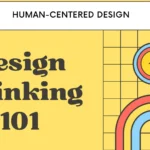Introduction
Heading into the new year, neurotech companies 2024 is looking very exciting because everyone’s talking about space exploration and this amazing mix of brain science and technology. It’s hitting headlines because it promises to change the way doctors help people and might even excite how our brains work.
Studying brains isn’t only for fun — it’s all about creating tools and ways to explore our nervous system. With all this focus on brains, neurotech companies it is not surprising that we can improve our brain’s way of working or fix small problems in our thinking, all thanks to what is actually happening in the world of technology.
And it’s not only a few random people speaking big — legitimate companies are heading the charge. They’re not being careless, using technology to tackle brain diseases or even dreaming up ways for us to text without lifting a finger. The hard work is real, neurotech companies with these important people creating new things all the time to turn what was once thought of as make-believe into everyday reality.

This technology isn’t staying locked up in labs or hospitals, either. It’s branching out everywhere. Imagine playing video games using nothing but your thoughts, neurotech companies or giving someone the gift of movement again through thought-powered technology. That might just be the practice part where making noises happens because kids are worried and confused.
Companies studying brain diseases using that well-known technology for plans soon change as it becomes popular. The hermetic result of this is basically a fast-forward into a future where your thoughts have significantly more power than ever before. It’s not only about healing anymore; neurotech companies it’s creating a world where our brains can connect with devices in a blend of biology and technology.
And as we creep closer to 20229, keeping tabs on companies jetting ahead with these amazing devices and procedures is very hard to understand. These pioneers are not fussing over just making cool gadgets; neurotech companies they’re solving big problems and making everyday tasks easier.
By shifting our lenses to these approach-changers, we’re already getting a glimpse into a not-so-distant future shaped not only by cutting-edge medicine but also by exploring this new dimension where our brains and machines intertwine in significant ways.
The Rise of Neurotechnology
In the beginning, learning was only about experimenting to understand how the brain worked. It was extremely new and everyone was just experimenting–but now, neurotech companies it’s changed a lot.
Today, we’ve got this amazing technology like brain-machine interfaces, also known as BMIs, and gadgets to help people who might have lost limbs feel like they haven’t, all thanks to science. It’s essentially turned material we’d only see in science fiction into things people actually use.
We’ve seen a large join in how much the concentrated environment, neurotech companies or world, of books has grown lately. One of the reasons we can take as a definite certainty that this is happening is because a significant amount of money has started to come into the scene.
Not only from government groups around the globe trying to solve health issues but also from big companies wanting in on the action and people who have a large amount of money to invest, neurotech companies looking for the next big thing.

They’re all giving money to companies that are working on brain gadgets, neurotech companies making everything move very quickly and bringing out many new inventions that might help our brains and bodies work better together.
Another interesting point is how getting people together from different study areas such as brain science, material to do with computers, neurotech companies engineering, and biotech has pushed things along even more;
these groups speaking to each other and working on projects together have made it significantly easier to come up with things such as simple and clean ways to see what is happening in your brain or to fix some problems without having to do big surgeries, neurotech companies keeping people safer–and making the technology easy for more people to use.
When it comes straight down to it, neurotech companies there is unsurprisingly a potential to keep this ball rolling. Different science fields mixing their ideas together is key and looks like it’s going to lead to even more marvelous phenomena down the line that we can’t even think up yet. Discussing Today’s Neurotech Scene
Today, the situation with xxx is that it’s doing extremely well in the marketplace; there’s a large wave of people needing these brain-aiding tools because there are more older people around these days and not to mention a lot more people dealing with brain problems.
On top of that, everyone’s pretty excited about where research–and making new things can go, and because of that, neurotech companies we’re looking at more gear to wear, treatments that don’t involve surgery, and very smart computer chips for the brain making an enormous splash in 2024.
Top Neurotech Companies in 2024
Digging into what’s big in 2024, we see some companies taking the lead and making some really great things with our brains. Exploring these top popular companies makes it very interesting to see what lies ahead.
In this group, Neuralink somewhat leads the pack, which Elon Musk began; the deal with Neuralink is their brain hook-up technology, officially called neural lace technology. It’s a very thin mesh that goes into your skull, neurotech companies allowing the brain to talk directly to devices and maybe even fix paralysis or improve how we think.
Next is Kernel, created by Bryan review: instead of going deep into your brain, Kernel’s goal is to keep things calm. Kernel Flow uses light to see inside your brain from the outside. It’s helping us learn a lot about making our brains work better and understanding what’s going on there, neurotech companies aiming to put that information into both doctors’ offices and our hands.

Synchron’s also causing a change since 2019 with something less scary than brain surgery to help people with paralysis move again; they’ve got Stentrode that slides into brain-blood vessels instead of cutting open your head, neurotech companies focusing on fixing movement problems and possibly much more.
Almost inevitably, we see these teams, plus some others getting help here, really pushing what’s possible with amazing ideas; neurotech companies you can feel happy knowing that what they’re up to might extremely change gaming with our brains, making science fiction the new reality.
Neuralink
Background and History
The story of Neuralink, created by Elon Musk in 2016, revolves around connecting humans and computers with extremely high-speed brain-machine interfaces; this company has an enormous dream: neurotech companies to support people dealing with brain problems and maybe make humans smarter and more capable.
Previously, during the 1970s and 1980s, people started to learn a lot about brain research thanks to amazing technology like MRI and CT scans. For the first time, scientists could see inside our brains without having to do something extreme, understanding how our heads are built and how they work.
An important step for them to come up with new ways to fix brain problems and make our minds work better. As we moved into the 21st century, the blend of brain science and technology made a big jump. Thanks to better computers, neurotech companies tiny special circuits, and stronger materials, the tools used to study the brain became much better.
It wasn’t just the equipment, though; businesses such as Medtronic and Cyberkinetics were leading the way, neurotech companies creating new ideas for linking brains directly to machines: amazing stuff like using special signals in the brain to help people with Parkinson’s and the beginning of brain-computer connections laid the groundwork for the smart tools we’re learning about today.

When you put it all together, one can see — and there are no ifs, ands, or buts about it — that Neuralink isn’t only showing up all of a sudden. It’s the solid and clear ending of this long journey of brain science evolution, neurotech companies shaped by years of technological advances and wonderful ideas about bridging the gap between brain and computer.
In recent years, the pace of innovation has accelerated dramatically, thanks to breakthroughs in artificial intelligence and machine learning. These technologies have enabled more precise and adaptive neurotech solutions, transforming the landscape of the field.
Today, neurotechnology is not only a tool for medical intervention but also a means to enhance cognitive capabilities and explore new dimensions of human potential. As we look to the future, neurotech companies the ongoing evolution of neurotechnology promises to unlock even greater possibilities, reshaping our understanding of the brain and its capabilities.
Key Technologies and Innovations
We’re delving deep into what Neuralink has put together, which is neural lace. It’s a tiny net that fits into your brain, neurotech companies really focusing on helping the brain stay focused longer, especially for people who’ve had bad injuries in their spine or have brain problems.
Because of this, these people might get to feel and move again like they used to. Despite technology leaping forward, neurotech companies making people and machines get along even better on the brain level, there’s a profound and deep-seated certainty that bringing our brain forums straight to gadgets is a golden move.
This project seems crazy–but it’s extremely wonderful too, because it’s solely focused on fixing and even improving human skills. Imagine getting better at everything just because your brain got a technology upgrade. That idea isn’t simply floating in the air; it’s exactly what Neuralink and another group, Kernel, are working very hard on.
They’re putting together these incredibly thin wires into a mesh that’s going to sit comfortably in our brains, making the discussion between our gray matter and hardware significantly smoother.
Although it may seem strange, raising our partner status with machinery up a notch is actually the dream here. In the end, neurotech companies we are discussing giving people a chance to feel and move like they used to or maybe even improving their brain power.
Kernel
Bryan Johnson started Kernel in 2016 with a mind to decode and enhance how our brains work using high-technology gadgets; the crew at Kernel grasped everyone’s attention when they came out with the Kernel Flow; neurotech companies this marvelous headgear, right off a sci-fi setup, lets people look into brain activities using near-infrared spectroscopy.
What this means is scientists can look at what’s happening in your head without any rather surgery or drilling – which is a relief.
Kernel isn’t only stopping at trying to make sense of brain activities for giggles — no, they have their sights set much higher. Their passion lies in untangling the mysteries of mental health issues, how we think and solve problems–and making sure our brain is in excellent shape as we age.
By dodging needing those uncomfortably invasive procedures to study the brain, Kernel stamps itself as a frontrunner in the race towards revolutionary discoveries in the field of knowledge. And what does this all boil down to?

The concrete and clear culmination of this sits squarely on Kernel’s shoulders – advancing our grasp on the enigmatic organ that is the brain, striving for advancements in tackling mental health and cognitive impairments, neurotech companies all the while pushing forward our overall understanding of brain wellness: Kernel Flux heralds this mission.
This wearable magic has far-reaching potentials that could drastically change our walk of life, underlining the important work happening at Kernel, neurotech companies thanks to their clever brain caps unlocking doors left and center without having to hack into our skulls.
Synchron
Background and Highlights
In 2016, the team behind Synchron started working on a less complicated and invasive way to help with brain disorders; they’re solely focused on connecting high-technology medicine with brain science to make things better for people who have those problems; the amazing technological devices.
What’s really exciting is that Synchron made the Stentrode. It’s not like the usual treatments because doctors put it in through your blood vessels. Once it’s in, neurotech companies it can catch what your brain is trying to say and might even help people who can’t move, move again.

Looking Into the Magic Glass
Synchron seems to be onto something big with its helpful tools for the brain.
It is moreover apparent to you and I that there’s a solid hope for people dealing with tough brain issues because of their work; neurotech companies the hermetic result of this might be a significant quotient of lives getting significantly better, especially for those stuck in really bad situations with their health.
Blackrock Neurotech
Background and History
Since starting up in 2008, the company known today as Blackrock Neurotech–but which began as Blackrock Microsystems, neurotech companies has been at the forefront of creating smart tools for the brain. They’ve been solely focused on making really good equipment that lets brains talk to computers and other technology. Key Technologies and Innovations
We can take as a definite certainty that Blackrock Neurotech isn’t experimenting when it comes to their technology; their neural implants, the Utah Array included, are precise in picking up and sending signals to neurons. Whether it’s making prosthetics move like a real limb or keeping seizures in check, their material is made for several uses. Future Prospects
Going forward, there is unsurprisingly a potential to revolutionize how we treat brain issues or improve our physical performance, neurotech companies and Blackrock Neurotech is right at the front of that effort: considering how much spectacular technology they’ve come out with so far, successfully leading the way on brains getting along with computers doesn’t seem far-fetched.
Neurable
Background and History
In 2015, Boston became home to Neurable, they’re solely focused on connecting brains to computers; they want to make it very normal for people to use this technology in their daily lives. Next we look closely at the insides of Neurable — their main invention is this really amazing virtual reality headset that you control just by thinking. It lets you play games, learn material, and do other incredible things, all with your mind. Future Prospects
One can see — unquestionably so — Neurable is on a path to make brain-computer gear something anyone can just pick up and use; neurotech companies their amazing skills could change how people begin to handle items, making it a regular thing in our lives.
MindMaze
Mindmaze, a Switzerland-based company that started in 2012, is making important differences in the focused area, or world, neurotech companies of brain recovery: these people are experts at blending brain science with amazing tools to support people dealing with what their brains are creating for them.
At the heart of what they do, you have the MindMotion PRO — this tool uses amazing technology like virtual reality and motion tracking to help people who have had a rough time with strokes or injuries get back on track, moving and thinking how they did before. Now, when we look closer at this,
we can easily see that it’s very clear that MindMaze’s way of thinking differently and solving therapy problems is possibly game-changing for the rehab world. They’re not only sticking to the old ways of doing things — no, neurotech companies they’re bringing in the best new tools to speed up recovery and make the improvements better.

Almost inevitably, we see this as more than just a cool new change in how we tackle brain damage. It’s hoping for how the future could be a lot better for those who are recovering from brain problems.
The real takeaway here is that MindMaze’s pioneering spirit and their cutting-edge devices might just be the light at the end of the tunnel many have been searching for. To wrap it all up, with MindMaze charging ahead, there’s a strong feeling that we’re about to see some very good results for people needing help to recover after very new xxx issues.
NeuroPace
Background and History
There is NeuroPace, isn’t there? They got started in 1997, and their big thing has been working on intelligent and informed material to help people with epilepsy. I believe, neurotech companies as you might hold credence also, that making life better for people dealing with neurological issues is their main goal.
Key Technologies and Innovations
Now, guess what – NeuroPace has come up with the RNS System. What it does is really amazing – it watches what’s happening in the brain and sends it a small amount of electricity to stop seizures before they can start. It’s essentially designed to tailor its treatment specifically for each patient.
Future Prospects
Looking ahead, NeuroPace is not simply staying with what they have; they’re in a very good position for leading the charge in treating epilepsy. You may be a little unsure that they’re always in the lab, neurotech companies thinking up new ways to use their gadgets for even more items–but they are, and that’s what could make an enormous difference down the road.
Emotiv
Emotiv began in 2011 with a focus on making devices for brain monitoring that you can carry around: they really want to make it simple and low-cost for anyone to check on their pet health etc.
When you examine their main gear, the EPOC+ headset, you can clearly see that it’s very obvious that it tunes into your brain signals very easily, which is important for not just people studying our brains but also if you want to improve your mental wellness or even enhance your thinking time experiences.
They’ve started to learn more about brain science, hoping to show us new things about our mental health and how we think. And we may thus possibly conclude, thanks to making this technology easy to get hands on,
Emotiv’s looking at possibly shaping up what comes next for not simply everyday people who wants to know more about their brains but also for the serious science and healing worlds.
NextMind
A intelligent and informed reader, such as yourself, will surely comprehend that NextMind began things in 2017 in Paris; they’re solely focused on making it so we can hook our brains up to computers with worry; their main plot? They want us to discuss with our gadgets without having to move a muscle.
Now, delving into what’s cooking with NextMind, their big deal is this brain-sensing gadget. It’s wild because it captures what our gray matter is bouncing around and turns it into commands for technology — think playing games or diving into VR worlds without lifting a finger.
Now, we can easily see that it’s abundantly obvious that this isn’t only spectacular, it’s amazing. About what’s down the road? Nextmind’s got sights set on changing the industry in how we mingle with our technology. It’s not fantasy — it’s the path they’re on to get our noodles directing gadgets in ways we’ve just dreamed of.
This means their intellectual technology is not only for kicks — it’s going to be the norm.
Challenges Facing Neurotech Companies
Technology material, especially when it comes to tricky tasks, is very difficult. First, there’s regulatory approval that these companies have to run through; they’ve got to prove that whatever brain gadget they’re making is both comfortable, safe, and does what it’s supposed to do, without destroying things. And checking those boxes isn’t only tough – it’s slow and burns a large amount of cash.
Then there’s the big question about whether all this is even right or fair. What happens to the material you thought was private inside your head? And what if the technology is used in bad ways or makes some people significantly smarter with enhancements? Companies must take this seriously. If they want us to be happy with their gadgets, they better tackle these questions head-on.
And I haven’t even begun talking about the technology hurdles. Even with all the smart people working on this, they’re still figuring out how to make the mind-machine link extremely sharp and the gear last longer without occurring again. It’s of significant consequence to make this material better.
The upshot of this entire piece is, clearly, that advancing in science is loaded with challenges, from proving safety to dealing with ethical dilemmas, and pushing technology forward. But, a discerning reader such as yourself, will surely comprehend the importance and complexity of this journey through the future of brain technology.
The Future of Neurotechnology
We close with this: the entire brain-technology field is really about to grow quickly; there are some important companies leading the way, creating devices that will change healthcare and improve what we can do as people.
As 2024 rolls around, we’re looking at some major changes thanks to these trailblazers. Starting off, **brain-computer interface development** is solely focused on making spectacular things for the brain, **such as** mind-reading gadgets and bionic arms that fit perfectly. Innovation isn’t stopping anytime soon, meaning the gadgets are only going to get better and more helpful.
Next, we engage in an intense examination of how this brain magic is going to change the industry for everyone. Healing brain problems, making us smarter, and even changing how we interact with computers and each other is there is unsurprisingly a potential future will see a massive shift. Living, working, and playing are solely focused on getting a major overhaul thanks to big improvements.
Finally, there is unsurprisingly a potential to_room redesigned.
FOR MORE
FAQs
When we discuss what solely focused on is, it’s basically solely focused on creating gadgets and methods that work together with our brain and nerves to either see what’s happening there or give it little pushes to act differently.
Now, if you’re wondering how this intellectual technology tinkers with content like feeling down, stressed out, or dealing with tough memories (that’s depression, anxiety, and PTSD for the textbook people), it’s absolutely undeniable that this material could really turn things around. Think about it, using electric signals and secret agent equipment to fix what’s going on in your head? That’s right.
But, wait, it’s not all wonderful gadgets and superhero abilities. There’s a significant amount of stuff that can go wrong, honestly: we must think about who’s looking into our brain notes (disgusting.),
who’s getting super smart and leaving the rest of us behind–and making sure everyone knows what they’re agreeing to when they say yes to messing with their brain.
Who’s the smartest student at school when it comes to trying new ways to make our brains work better? Look no further than Neuralink; these people aren’t playing games; they’ve got dreams of connecting our brains to computers with some amazing new technology that’s pretty surprising.
Fast forward a bit, and what’s the crystal ball telling us about the intellectual technology we’re going to see? We can easily see that it’s abundantly obvious that the next ten years are going to amaze us with computer connections that let us share thoughts,
robot body parts that work perfectly, and ways to watch what the brain’s doing without even having to open the head. Discuss leveling up humanity!










